|
|
|
|
ISSUE 13 | OCT. 2020
|
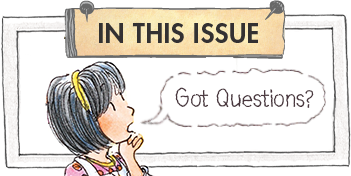 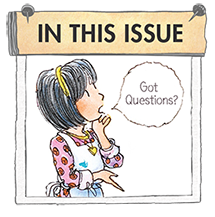
|
|
As each school year begins, we get many program-related questions from Superkids teachers. In this issue, we are going to address some of the most frequently asked questions.
You may find that parents have similar questions about the program. We hope these responses can help you address any parent questions that come your way.
|
|
|
|
|
|
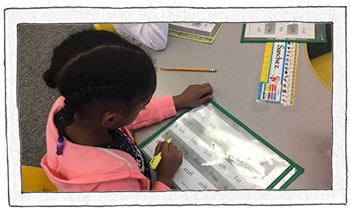
Why are my kindergartners only learning one sound for each letter?
In kindergarten, children are taught one sound for each letter of the alphabet, and all the words they encounter in their reading contain only the letter-sounds they’ve been taught. Children use the letter-sounds they’ve learned to confidently decode words rather than guess which letter-sounds to use when reading.
As a result, children experience early success as readers and gain confidence in their ability to decode. They soon develop excellent word attack and blending skills. By the beginning of first grade, students have achieved automaticity with single letter-sound correspondences. They then begin learning sounds for digraphs, long vowels, and vowel variants.
|
|
|
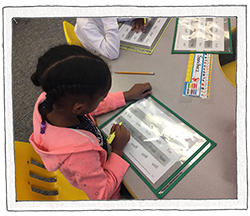
|
to decode. They soon develop excellent word attack and blending skills.
By the beginning of first grade, students have achieved automaticity with single letter-sound correspondences. They then begin learning sounds for digraphs, long vowels, and vowel variants.
I am used to teaching a weekly list of sight words in my kindergarten class. Why am I not doing this with Superkids?
The research is clear that it is important to not teach too many sight words, or non-decodable words, to emerging readers. In kindergarten, our goal is to establish a decoding habit. Children need to understand there is a predictable relationship between letters and sounds and that they can “unlock” words by moving left-to-right and applying and blending the letter-sounds they know.
Building the decoding habit by explicitly teaching the letter-sounds, then giving emerging readers many opportunities to practice what they know by utilizing decodable text, is the surest way to solidify a decoding habit AND build confidence, so they will fearlessly decode unfamiliar words.
If during this tender time children are confronted with a lot of words that defy the left-to-right sounding-out principle, they can become confused decoders. A confused decoder will resort to guessing based on pictures and/or partial alphabetics. Continued exposure to words they can’t sound out will derail confidence and put guessing front and center as their preferred strategy. This is never a good option, because guessing will not prepare students for the increasing demands placed on their reading brains moving forward.
|
|
|
|
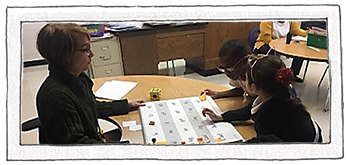

|
|
I am used to teaching consonant blends. Why am I not teaching blends with Superkids?
The program does not specifically teach consonant combinations such as gr and bl. The program does teach children to read words by blending sounds in sequence whether the letters are consonants or vowels. Once children learn the sounds for the individual consonants, they can blend combinations such as sl or gr as easily as they blend sa and ip. Because of this explicit blending instruction, there is no need to teach consonant blends as separate sounds.
|
|
combinations such as sl or gr as easily as they blend sa and ip. Because of this explicit blending instruction, there is no need to teach consonant blends as separate sounds.
I have a few students who I thought were doing fine, but as I introduce new phonemes, these students are having trouble decoding. They know the letter-sounds, but they can’t blend them into words quickly. How can I help them?
First, consider how you are providing blending and decoding practice. Is this practice usually done whole-group, or are there opportunities for small-group practice as well? It is easy, especially when something is hard, to let others take the lead. If your class always practices blending in a large group, some students will be content to chime in and echo what they are hearing, but not actually practice themselves. Be sure you offer times for individuals to practice. Call on smaller groups such as front row or table, students with a “d” in their name, etc. Focus on struggling students this way, so they get plenty of small-group practice.
When providing differentiated instruction to small groups or individuals, the Superkids Skill-Building Book contains many activities for strengthening or reteaching blending and decoding skills. Keep in mind, if a student continues to struggle with basic blending activities, they might need more practice quickly retrieving individual letter-sounds.
Coach tip: If teaching remotely, attach the current Big Book of Blending or Big Book of Decoding PDF to your lesson. Assign a row or column to the class. Ask the students to record themselves reading the assigned words and submit the recording to you.
|
|
|
|

|
We don’t have a contiguous 90-minute reading block. How do I to break up a 90-minute lesson in a way that makes sense?
The lessons are very linear. The first segment of each lesson is a daily routine that takes 10–15 minutes and is designed to review previously taught concepts and provide for informal assessments each day. The lesson then moves into the core instruction. We advise teachers to simply follow the lesson steps, as the lesson steps provide natural breaks that enable instruction to be taught in “chunks.” Skill lessons are followed by Ten-Minute Tuck-Ins for additional reinforcement or enrichment. These can be done in a self-contained chunk of time as well.
|
|
|

|
be taught in “chunks.” Skill lessons are followed by Ten-Minute Tuck-Ins for additional reinforcement or enrichment. These can be done in a self-contained chunk of time as well.
If I think that a lesson is not rigorous enough, can I skip ahead?
We recommend keeping all students in core instruction, but adjusting time (pacing), intensity, and rigor within the lessons may be necessary. Remember, this is a complete language arts program. While some students may be strong readers, for example, they will likely need grade-level instruction in other language arts. The Teacher’s Guides provide points of differentiation, and the Superkids Skill-Building Book provides hundreds of ideas for targeted differentiation (including Challenge activities).
We don’t advocate skipping lessons because it is unlikely all students will have solid understanding of all skills and concepts within any one lesson. However, if the class does have a fundamental understanding of the content, we encourage you to quicken the pace of a lesson as appropriate and move quickly to the critical point of instruction.
|
|
|
|
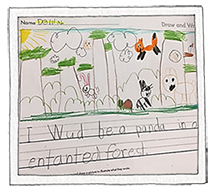
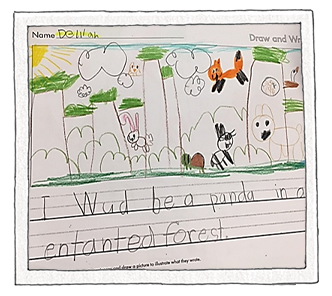
|
During writing, we encourage “temporary spelling” in our classroom. Does this conflict with the Superkids program?
Teachers should assist children with correctly spelling Memory Words that have been taught as well as words that consist of phonemes they have learned. If a child spells these words incorrectly, ask them to correct the words using what they know.
|
|
For example, in first grade after Unit 1, children should be able to spell CVC words; short vowel words with sh and ch; and Memory Words I, my, she, her, he, and his. For words with phonetic elements that haven’t been taught yet, accept temporary spellings or help children spell the words as they write. It is a good idea to resolve temporary spellings during editing, so that children can see models of standard spelling.
This tip comes from a Superkids teacher who is working remotely: “I found it challenging to meet one-on-one with my students to discuss their writing, and I felt the conferencing piece was missing. So, I ask my students to submit their writing when completed. I then video myself offering positive feedback, suggestions for edits and address spelling corrections with reminders about sounding out words. I send the video to the student when completed. It doesn’t provide for the usual back-and-forth conversation, but it does create a connection.”
What about children who are struggling with the spelling words or doing poorly on the spelling tests?
The Daily Routines are essential to the program and need to be done every day. Not only do these routines provide important practice for the children, but you can also get a daily snapshot of how the kids are progressing as spellers. The routines will include Memory Words and Pattern Words from the spelling lists and words that include the phonetic elements taught in the unit.
Students who are noticeably struggling with the spelling routines will benefit from more practice. Students can complete the spelling activities that are included in the Independent Activities section of the lesson. Most of the activities use Practice Pages that reinforce spelling and encoding words from the unit.
For individual students or small groups, choose an activity from the Ten-Minute Tuck-Ins or the Superkids Skill-Building Book that would work well with the spelling words. Extra intensity with an aide, teacher, parents at home, or even during independent practice can go a long way in helping cement those skills.
For repeated practice with Memory Words in first grade, play the spelling songs as much as possible. Many teachers use these songs during transition times, so they are heard several times a day. Even the children who are reluctant singers will benefit from hearing the songs. They have a way of sticking in your brain!
Finally, if you have a few target students who need a modified list, you can shorten the number of words on the weekly list.
|
|
Recently we shared a popular classroom activity on The Superkids Reading Program Facebook page from Brittany Rae’s class. Her students created their own portraits to accompany the Superkids poster. Many teachers asked for a portrait template to do the same activity with their students, and we created these just for you! Click below to download the portrait templates that will match the K, 1, and 2 Superkids posters.
Can’t find your poster? No problem. Here is a link to access printable Superkids posters for each grade level.
|
|

|
|

|
|
|
|
|